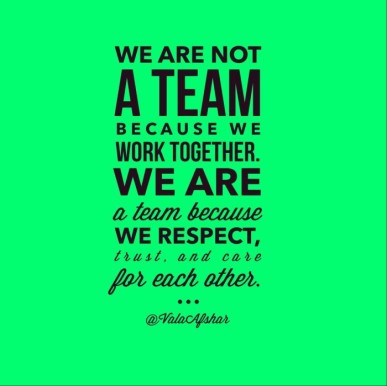Psychology of Running
Speed From Strength
Nick Symmonds (Olympic Qualifier):
Favorite Workout:
10 x 800m on the trails. People are often shocked to learn that half milers need to do 8000 meters worth of work occasionally. Well, I don’t train to run the 800, I train to run THREE ROUNDS of the 800. #Champion

-Nick Symmonds
Mental Toughness During Races
Strategies to Help You:
So, the question is, how can you prepare for the mental and emotional rigors of race day during your workouts and in your mind?
Sports psychologist recommend adding a technique called visualization to your race day arsenal so you can toe the line feeling confident in both your physical and mental strength.
In this article we’ll outline how visualization works for some of the best runners in the world, when you should implement it in your training, and outline a step-by-step process for helping you easily add visualization to your training repertoire.

How to visualize in training:
The most effective way to use visualization is to help you be prepared for anything on race day. Any sports psychologist can tell you that to the human mind, there is no difference between an actual experience and an imagined one. This means that your mind cannot tell the difference between a race that you run in-person and a race that you run with your mind’s eye.
Step 1: Be specific and detailed
Imagine yourself at the starting line, surrounded by other league runners – is it hot, is it cold? When the gun sounds, envision the acceleration in your heart rate and the claustrophobic feeling as the stampede begins. By conjuring up these emotions, sights, and sounds, you can prepare yourself to remain calm, collected, and execute your race plan in a chaotic environment.
The more specific you can be with the sites, sounds, and emotions, the more calm and confident you’ll be on race day. Here are some important elements to consider:
- Weather. Will it be cold on race day? (how cold impacts race times) Will it be warm? (how heat impacts race times) Will it be humid or raining or snowing? (how to race in adverse conditions) Find out this information by looking online at average weather temperatures for the area as well as the actual forecast closer to race day.
- Course. Will the course have hills? If so, how many and at what point of the race? Also pay attention to courses with many turns that can break rhythm and courses that feature heavy spectator cheering that can push you.
Step 2: Don’t just visualize the positive – expect the unexpected
Likewise, visualize positive and negative scenarios. Let’s face it, no matter how fit you are, a race is going to hurt at some point. Imagine yourself working through those bad moments during the race. This way, when they inevitably occur, you’ll know exactly what to do and be confident you can work through them.
Visualization before the race
Recollect all your great workouts:
If you find yourself getting nervous before the race, start thinking back to all the great workouts you had during your training. Think back to your last successful race and begin to conjure up those same feelings of accomplishment.
Focus on what you can control:
Take the focus off those elements of the race you can’t control (your finishing time, your opponents, the weather) and direct them to outcomes you can control.
Visualize yourself executing your race plan, going through your warm-up routine, and even focusing on your breathing. By directing your thoughts to those physical and mental aspects you can control, the nerves will dissipate and you’ll increase your chances of success.
–Running Within by John Lynch.
Visualization Works
How to implement visualization
- Relax! Choose a quiet dark place with no distractions, and begin by relaxing your entire body, from your head to your toes. Think of a beautiful, quiet place. Once your mind and body are at piece, begin the visualization.
- Set the scene. Using your list of race scenarios, see the starting area with your minds eye. Feel the breeze on your skin, hear the noises of the crowd. Develop a mental picture involving all senses before you begin the race.
- Focus on emotional and physical sensations. Feel the doubts and nerves of the starting line but use positive language to overcome them. “I AM a runner, I CAN do this, I AM supposed to be here.” Once the gun goes off and you begin the race in your mind focus on calming and relaxing, and establishing a solid rhythm. Visualize the pain of the race and with your mind’s eye look at the other runners around you, tell yourself that they are experiencing the same pain that you are.
- See a positive outcome. Imagine the finishing time that you wish to achieve displayed on a giant clock above you as you soar across the finish line with arms outstretched, imagine the feeling of joy as all of your hard work pays off. Imagine your family and supporters rushing toward you, filled with pride.
- Repeat. Insert a different situation from your list of possible race details (different weather, etc…) and repeat the process. Make sure to visualize at least 1-2 nights leading up to the big day.
However, if you’re already pushing your physical limits and want to take your race performances to another level, incorporating visualization techniques into your training and racing can provide the advantage you need.
–Running Within by John Lynch.
Boost Your Self-Confidence
Boost your self-confidence:
Another advantage of visualization in training is the opportunity to boost your confidence. It’s been well documented that high confidence correlates to an increased level of performance. By visualizing yourself succeeding, you can subconsciously improve your belief in yourself and your abilities.
To enhance your self-confidence, try implementing:
- self-affirmation
- self-talk into your daily routine
Spend 5 minutes 1-2 days before big race. Before going to sleep, stand in front of the mirror repeating specific, positive messages to yourself. The mirror helps engage the visual receptors in the brain and helps internalize the positive messages.
Phrases such as:
- I am fit
- I am fast
Create your own self-affirmation phrase and spend 5 minutes repeating it to yourself. Before you know it, there won’t be a doubt in your mind you’re going to perform on race day.
–Running Within by John Lynch
The 3 Day Race Countdown
Training and nutrition tips for the 3 days leading up the your big race (LEAGUE MEET)
The final 3 days before a race are very important. The final meals and mental preparations and logistical planning you do in this window can have a major impact on your performance — for better or worse.
Here’s a checklist of things to do in the race countdown to ensure that you get the most out of the hard training you’ve done.
Start carbo-loading:
Research shows that one day of very high carbohydrate intake (4.5 grams of carbohydrate per pound of body weight) is sufficient to maximize muscle glycogen stores. But you might as well start two days out for good measure. The best time to start carbo-loading is right after your workout, when your muscles are most receptive to glucose.
It takes some work to consume 4.5g of carbs per pound of body weight in a single day so start 2 days before your big race.
Examples:
- oatmeal, bagels, yogurt and orange juice for breakfast
- noodle soup, granola bars for lunch
- rice dish for dinner
Do a short, fast workout:
Your next-to-last workout before a race should be relatively easy, so you’re not fatigued on race morning, but it should include a dash of speed to prime your nervous system for competition. For example, 100-200meter relaxed sprints. Read the rest of this entry »
Eichel Stresses Patience

Watching the game from the press box as he did was a new experience for Jack Eichel, who admitted that PATIENCE isn’t one of his most oustanding virtues. Yet PATIENCE was his emphasis when speaking to the media for the first time since sustaining a high-ankle sprain in practice earlier this week.
Eichel said it’s the first serious injury he’s had to deal with:
“Obviously my ankle doesn’t feel too good but I think the worst part is definitely [mental],” Eichel said. “You want to be out there with your teammates so badly and you miss it … That’s probably the hardest part for me.”
In talking toother teammates who have experienced the injury, Eichel said the best advice he’s received is that there will be days when he feels better, as if he could lace up his skates and hit the ice. Unfortunaetly, that won’t be the case.
His primary focus is waiting until he’s 100 percent to avoid risking re-injury. Until then, he’ll work with the Sabres training staff to learn as much from his predicament as possible.
“It is what it is,” he said. “Injuries are part of the game. We play a physical game, we play a fast game, so it’s important that I learn to deal with this experience and just make myself better while I’m out and take my time and make sure when I come back I’m able to positively affect the team.”
–@jourdonlabarber / Sabres.com
Positive Reasons To Run
Image Posted on Updated on

-Diaz, Cameron. The Body Book: The Law of Hunger, the Science of Strength, and Other Ways to Love Your Amazing Body. N.p.: HarperCollins, n.d. Print.



